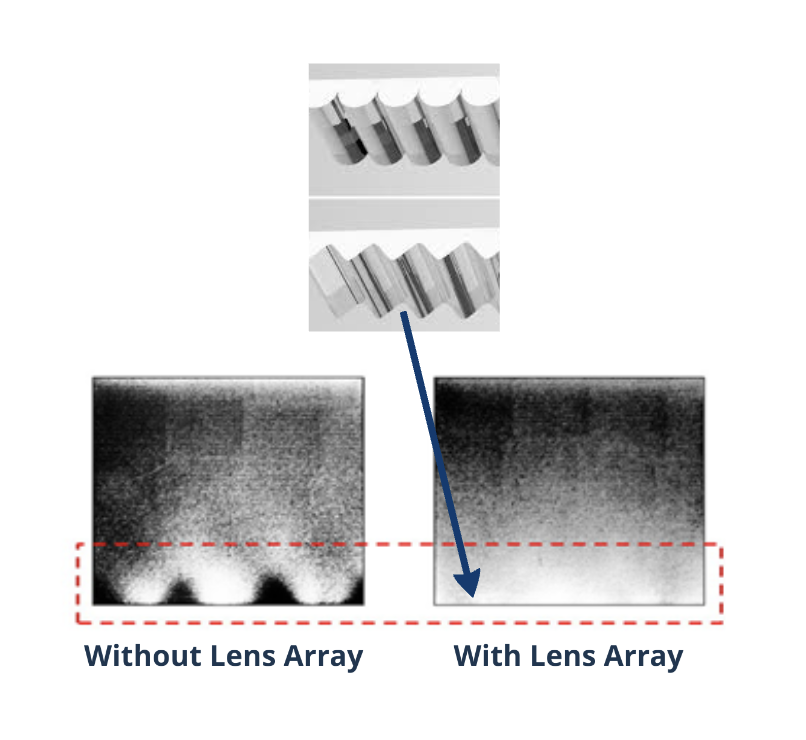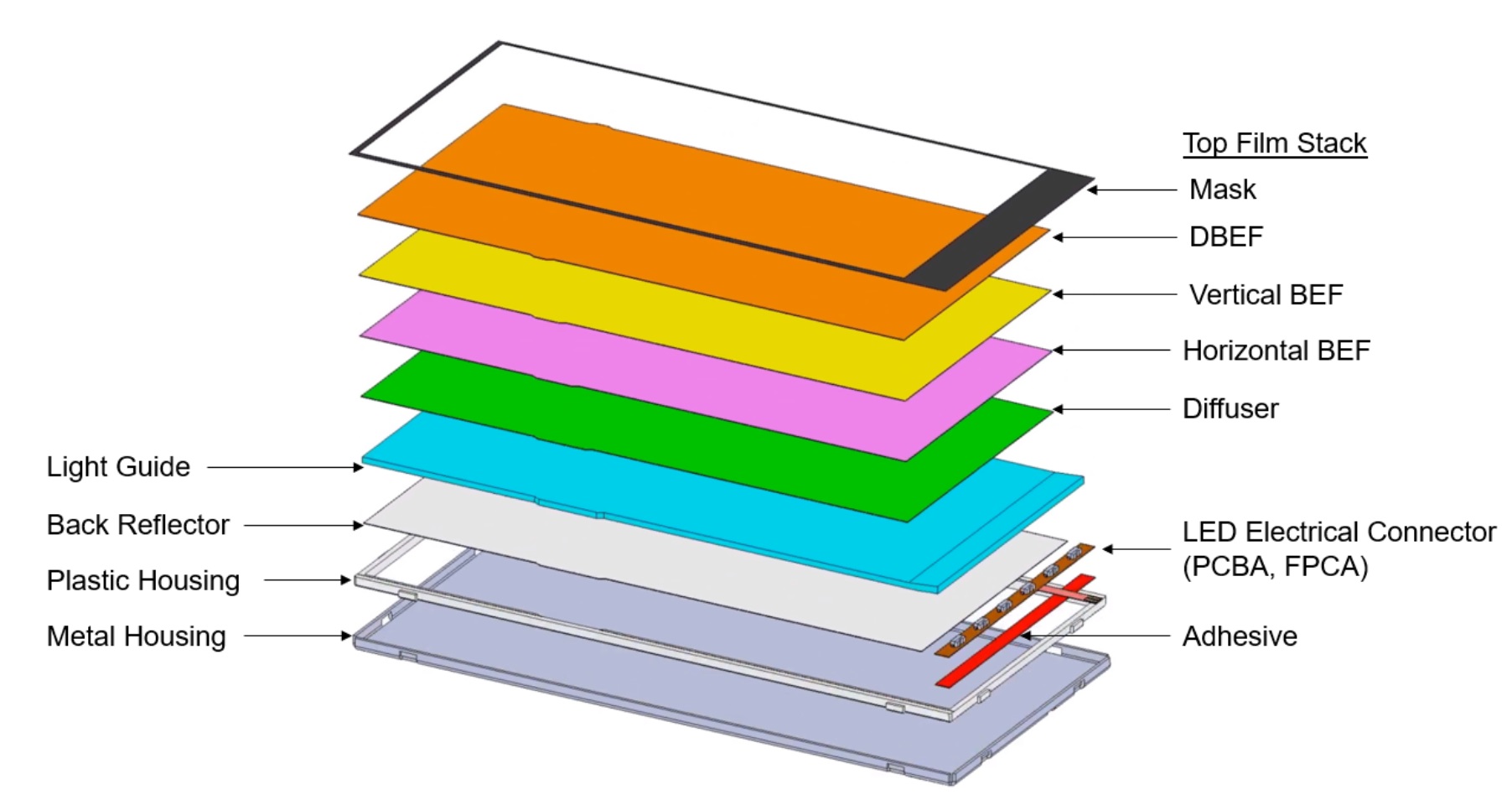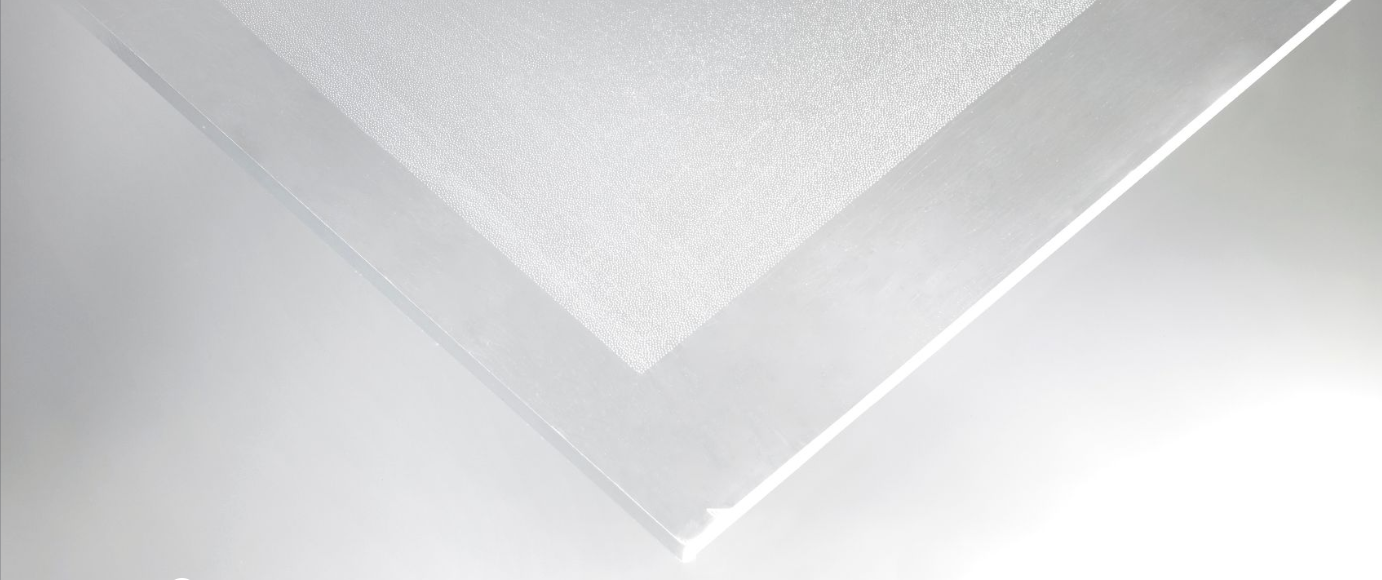
The Global Lighting Team Reveals 5 Ways We Level Up Light Guide Design & Uniformity
When your project requires consistent light output over the entire surface of an application, uniform LED lighting using a light guide is essential. Whether it’s a small keypad or a large video wall, the end users should see the same level of brightness and color no matter where they look.
This can be a challenge, especially with larger devices. The lighting engineers at Global Lighting Technologies leverage our proprietary light guide technology to overcome challenges. The result is increased uniformity throughout your device.
Read on for the top five approaches that contribute to uniform LED illumination in our custom light guides with commentary from several Global Lighting Technologies Project Engineers. The methods they discuss (and the decisions surrounding them) fall within our proven process, which alleviates the complexity that can often come with a light guide design project.
1. LED Selection
Not all LEDs are the same. To create uniform LED lighting, it’s important to select LEDs that emit light over a wide angle. This ensures that the light spreads evenly and creates a uniform appearance. When you work with an experienced light guide manufacturer like Global Lighting Technologies, “you gain expert insight into the right LEDs for your project,” says Dillon Brady. “There are multiple variables to consider such as brightness, package size, and power requirements.”
“There are two main types of LEDs. Side fire LEDs, where light is emitted from the side of the LED, and top fire LEDs, where light is emitted from the top face of the LED,” says Josh Kozel. “Side fire LEDs are most suited for thinner light guide assembly applications and more commonly used over top fire LEDs.”
Dillon Somodji comments, “We use a wide variety of LEDs based on project needs, varying in thickness from approximately 1.5mm to 0.35mm. We can utilize LEDs in a range of color, power, and luminance characteristics.”
LEDs are also chosen based on the application’s industry, say Jordan Abood. “LEDs for consumer electronics may be different than those we use for automotive applications.”
2. Secondary Lenses
Additionally, LED lighting can be created with secondary lenses or lens arrays.
Secondary lenses are an effective way to create uniform LED lighting for an array of light guide applications. According to Jordan, the texture of secondary lenses is important because, “jagged edges where the LED shines in help better disperse light.”
Dillon B. further comments on secondary lens shapes, saying, “The lens array often consists of a V-shaped cutout patterned across the edge of a light guide. This pattern is placed on the LED side of the lightguide to evenly distribute the emitted light.”
3. Indirect Lighting
Our team often uses indirect lighting to create uniform LED light output. By reflecting or refracting the light, we create an even distribution of light, which contributes to a better user experience. “All of our products are illuminated indirectly,” says Dillon S. “The LED does not output light directly into the viewing area of a light guide. Rather, we use edge illumination, in combination with thin side-fire LEDs, to create a competitive advantage for our customers by reducing the overall thickness of their assembly.”
Due to Snell’s Law, “light will bounce back off the micro-structure and back into the system,” says Jordan, “which is why we use indirect lighting for any application that contains our optical micro-structure.”
Our indirect lighting capabilities don’t stop there. “We’re capable of creating indirect lighting using a curved, injection- molded lightguide,” Dillon B. comments. “If an LED faces perpendicular to the light guide, the edges of the lightguide can have a downward curve to couple the end of the light guide with the LEDs. The light will travel up the curve of the light guide and through the rest of it thanks to the phenomena of total internal reflection (TIR).”
4. Diffuser Placement
A diffuser placed between the LED and the observer helps disperse light more evenly. This results in a more uniform distribution of light because the light is spread over a wider viewing area. While this method may decrease light efficiency, our customers often view this as a worthwhile tradeoff for increased uniformity.
Diffusers are impactful, especially when combined with other methods. Dillon B. affirms, saying, “Diffusers are used in many LCD backlights to achieve the required high uniformity output. For example, we use diffusers in rear-view mirror backlights with various other films to achieve a bright, uniform output.”
“There are various films we use in a light guide assembly to create a uniform, bright output,” Josh contributes. “We place secondary films on top of the light guide to change how light is emitted. They’re made from polycarbonate or polyester materials.”
Josh continues, saying, “A recent customer added a diffuser to their light guide assembly to create a more uniform light distribution. This is critical to them because the illumination is used as a visual instruction.”
We delve deeper into the purpose and placement of diffusers and other optical films here.
5. Proprietary Light Guide Optical Patterns
Our patented optical patterns are the foundation for uniform LED light guides. An optical pattern is a series of microstructures embossed or molded on a light guide that interrupts total internal reflection to extract light and achieve a uniform light output. In simple terms, “they’re very small, strategically placed structures on a light guide plate that redirects light,” says Engineering Manager Jonathan Tarnay.
Without an optical pattern, light remains inside the light guide because it is below the critical angle of the light path, also known as total internal reflection. This needs to be interrupted for light to leave the light guide. Optical patterns change the angle at which light strikes the surface. This alters its path and directs the light out.
Achieve Uniform Lighting with an Experienced Light Guide Manufacturing Partner
As light guide illumination experts, we’re here to help you identify the solution that makes sense for your project’s goal and end application. Work with our team of experts to bring your next illumination idea to life! Contact us today.



